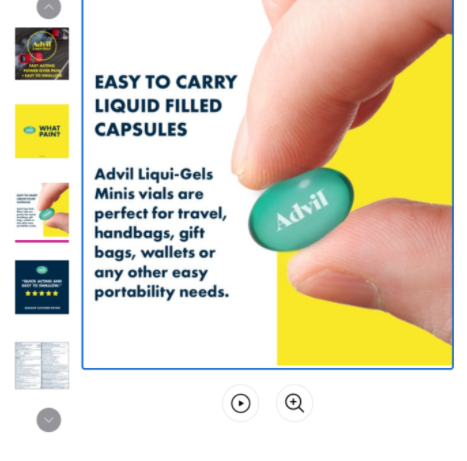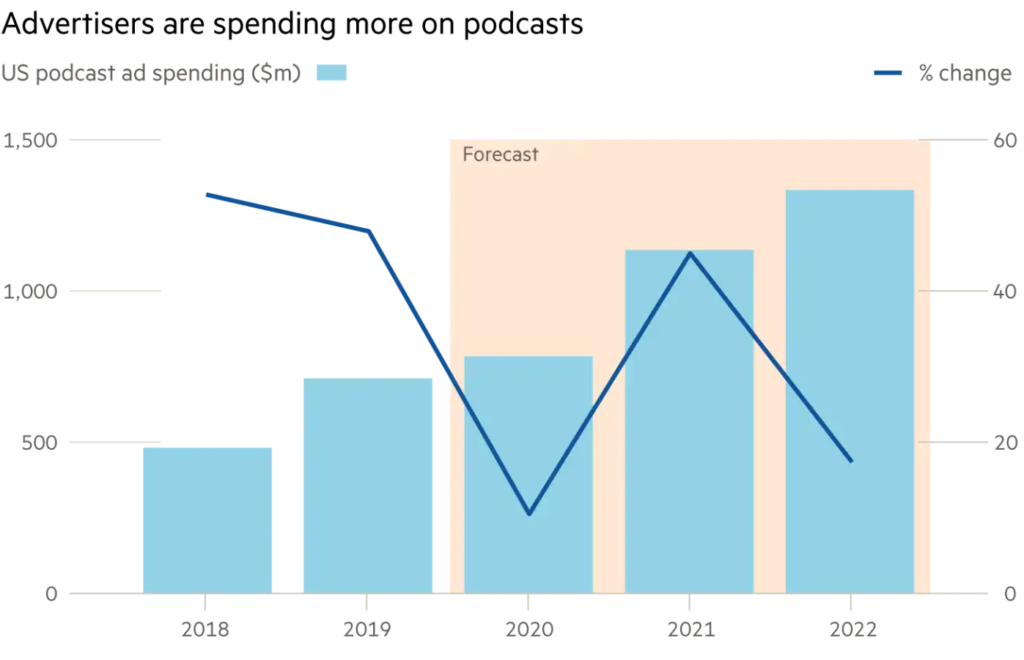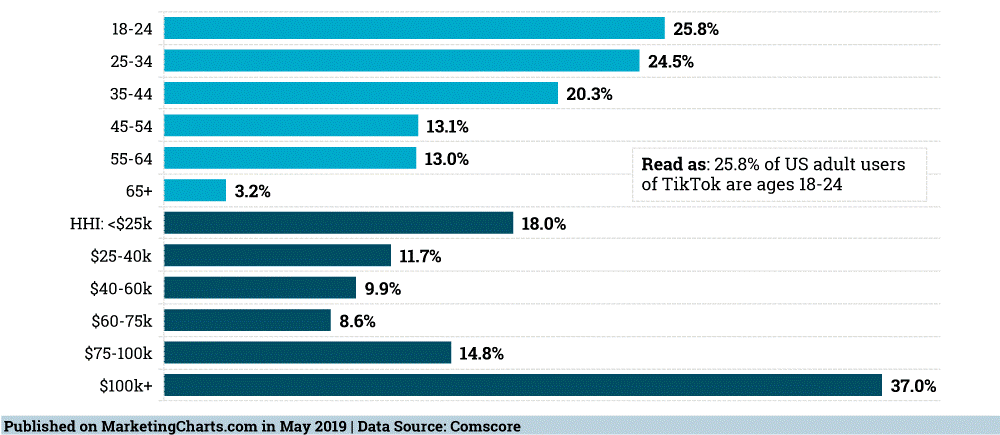As a digital marketer or one who is running an eCommerce website, keyword research is vital. Figuring out how to find the best buyer-intent keywords for the final stage of the buyer’s journey will help give you a competitive edge while also helping to justify your spending on content marketing.
According to Vividfish, 89% of customers start their buying process in a search engine. If your brand isn’t showing up in the right places, you’re losing out on sales. In fact, more than 60% of marketers note that leads are one of the top metrics they use to measure content success.
What are buyer-intent keywords?
Buyer intent keywords are search queries that show someone is actively looking to make a purchase. Once you know the buyer-intent keywords that your ideal customers are using, you can start to target them with relevant content or paid ads.
To fully understand buyer keywords, having proper knowledge of the buyer’s journey is important. While there are many models out there for the buying process, the buyer’s journey can be divided into three stages: the awareness stage, the consideration stage, and the decision stage.
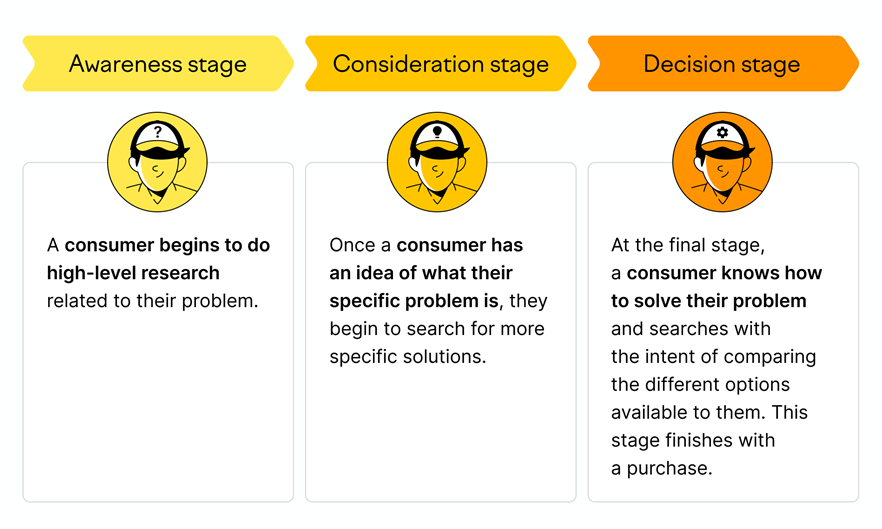
Source: SEMRush
Buyer keywords come into play during the last stage of a buyer’s journey. When customers reach that final stage of making a purchasing decision, they use buyer keywords (also referred to as buyer intent keywords) to look for specific products or services. For example, these sets of phrases include “best Airbnb deals,” “best price for a smartphone,” and “affordable luxury items.”
4 Types of Buyer-Intent Keywords
1. Buy Now Keywords
These keywords are self-explanatory. If someone is looking to “buy xyz now” we can assume they’re ready and want to make a purchase. They’re not looking for review sites or long blog posts on the topic. They’re looking for a vendor who’s going to sell them the solution they need.
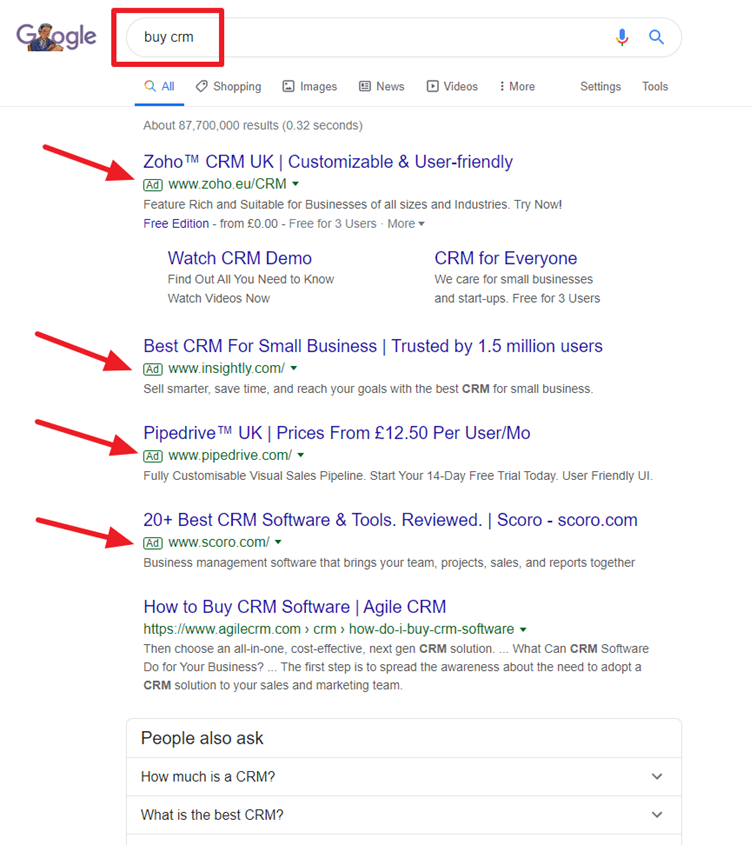
Source: Google
From the image above, when you type “buy CRM” into Google, you’ll see ads from a range of CRM companies. They know it’s a keyword with higher buyer intent, and are willing to spend money targeting it.
2. Product Search Keywords
A user who knows that there is a potential solution to their problem will use a product search keyword. For example, for a user who wants to deploy a first-rate email tool, a keyword like “best email marketing tools” is an example of a product search keyword.

Source: Google
These show buyer intent because someone is preparing to make a purchase, and they’re actively researching to find the best product for their needs.
3. Informational Keywords
As suggestive as its name, these are keywords and queries that buyers will use when they’re looking for information about a problem they’re having, or a solution they’re evaluating.
These keywords are higher in the sales funnel and have a lower level of buyer intent compared to the keyword types highlighted above. Despite being earlier in the buying cycle funnel, informational keywords can be critical to the final decision.
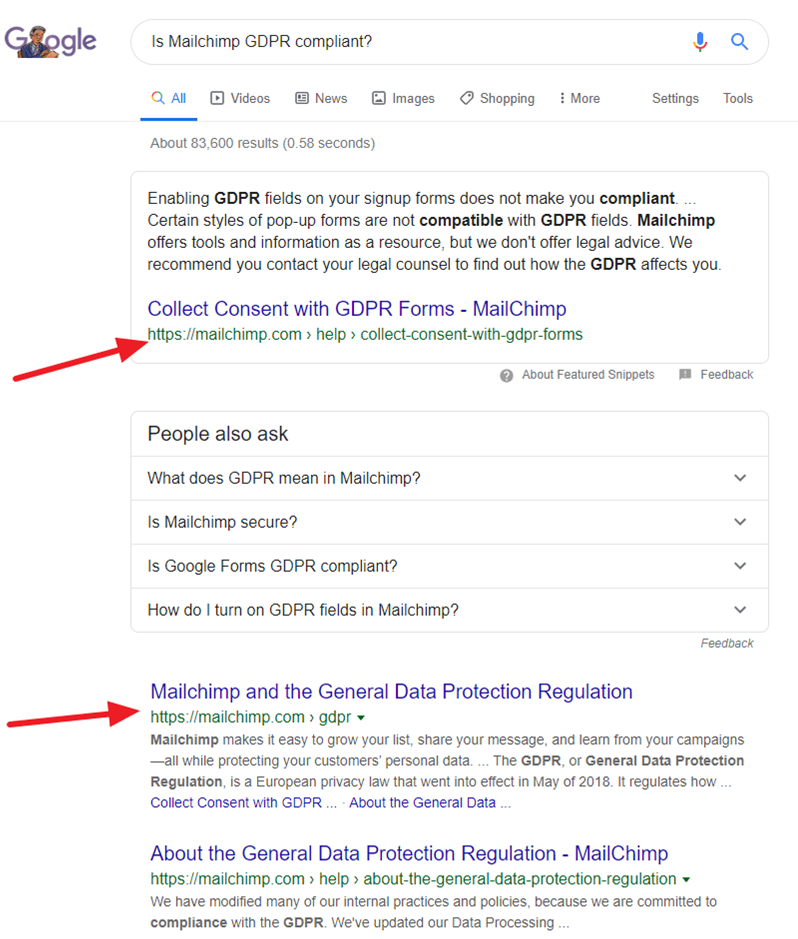
Source: Google
4. Low Purchase Intent Keywords
An example of a low purchase intent keyword is the word “Free”. If a user includes that in their search query, they are probably not intent on spending much (or nothing at all), hence won’t pass for a profitable lead.
Therefore, if you’re selling a DTC product or run an e-commerce store, these intent keywords won’t be useful to you, as you aren’t going to ship products for free.
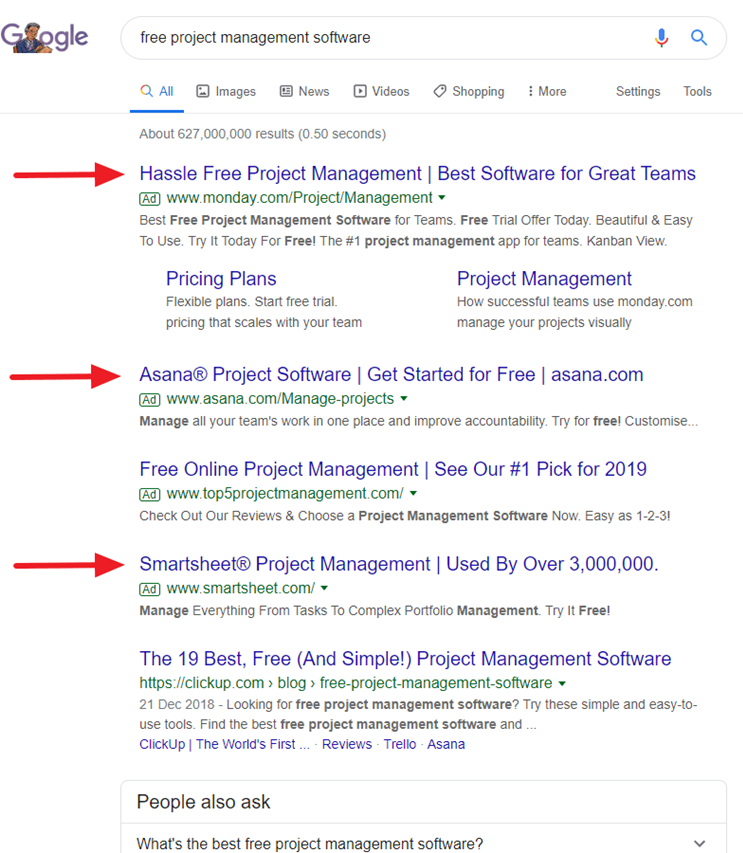
Source: Google
3 Ways to Find Buyer-Intent Keywords
There are three simple ways to identify your buyer-intent keywords. Here are how to find them:
1. Google Search
You can start by doing a Google search for queries related to your solution. Generally, keywords with high purchase intent will have multiple ads, and they will often include a direct Call-To-Action such as “Buy Now,” “Start Your Free Trial,” “Promo,” or “Get Your Free Gift.”
You can also scroll down to the bottom of the page and review the Related Searches.
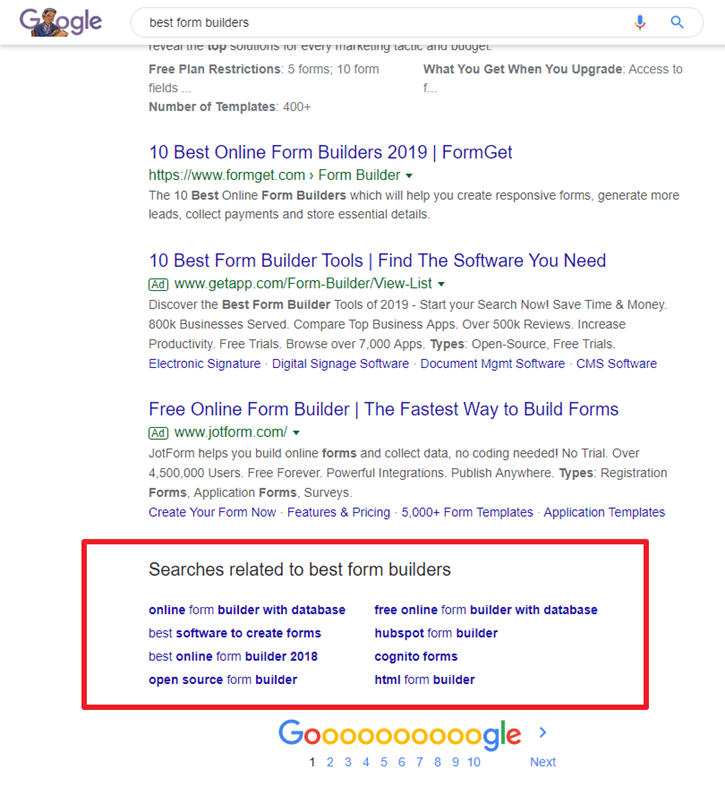
Source: Google
2. Keyword Research Tools (Ahrefs, SEMrush)
You can use keyword research tools like Ahrefs or SEMrush. With these tools, you can quickly find a list of high purchase intent keywords with a simple process. Here’s how you can do it with Ahrefs.
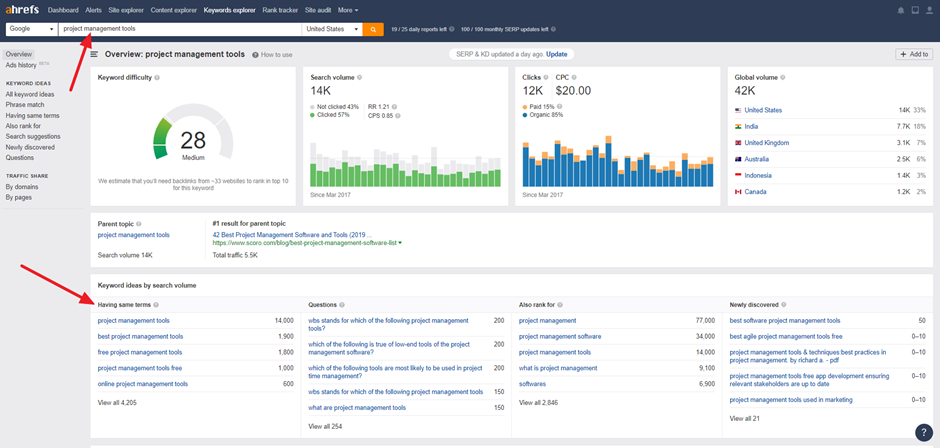
Source: Ahrefs
Step 1: Type the keyword that best describes your solution into the Keyword Explorer.
Step 2: Observe the results for the keyword ideas “Having Same Terms”.
Step 3: From the list of displayed keywords, you’ll see a range of queries, but expect to find high buyer intent keywords such as:
- Keyword + tools
- Best keyword
- Best keyword for xyz.
3. Customer Surveys
Simply asking your customers is another method of finding buyer’s keywords. If you have a web-based product or service, then during the on-boarding you should include an open-ended question. This question could as simple as: “What problems do you have that led you to our solution?”
Armed with the knowledge of your customers’ pain points (in their own words), you can create useful content around them. This will become a useful resource material (guide) for potential customers who visit your website with a similar problem.
A/B Test Different Keywords
Once you have a list of keywords to work with, you can also test their ability to convert through A/B testing. A/B testing refers to testing one option to another and seeing which one delivers better results.
How to Create Content That Gets Customers to Convert
Keyword research is a way for you to find terms and phrases that are important to your customers. Keywords are also essential in achieving your own goals as a business, which is to capture leads and sell more through buyer keywords.
Whether you’re starting a new SEO project or revamping your website, building a comprehensive, relevant keywords list should be part of your SEO strategy. With keyword research tools you don’t have to be thoroughly versed in SEO or be employed as an SEO expert to compete in your industry.
You can also explore keywords in topic-specific subgroups, use quick exclusion, and get semantically related long-tails which can help you source relevant buyer keywords for your brand.

